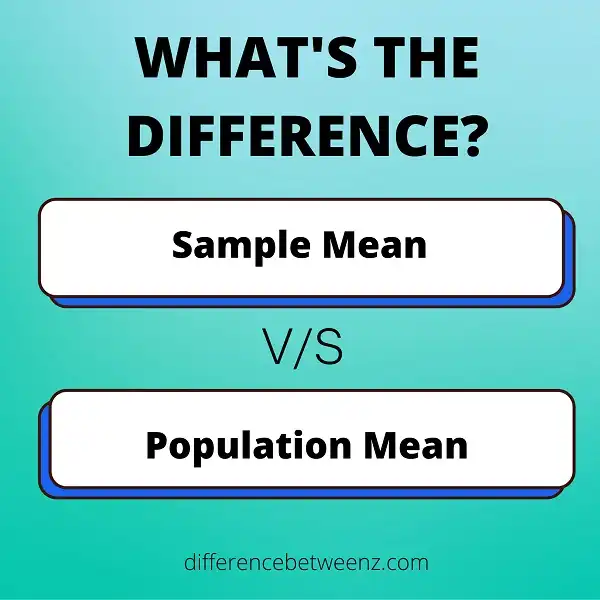When calculating statistics, it is important to understand the difference between the sample mean and the population mean. The sample mean is calculated using a sample of data from a population, while the population mean is calculated using all of the data in the population. The sample mean is generally less accurate than the population mean, but it can be used to estimate the population mean. Understanding the difference between these two means is important for correctly interpreting statistical results.
What is Sample Mean?
Sample mean is a measure of central tendency that is calculated by adding all the values in a sample together and then dividing by the number of values in the sample. Sample mean is also sometimes referred to as the arithmetic mean or simply the mean. Sample means are used in many different types of statistical analyses and can be very useful for summarizing data. However, it is important to remember that sample means can be affected by outliers, so they should not be used as the sole measure of central tendency. Additionally, sample means are only accurate if the sample is representative of the population.
What is Population Mean?
Population mean is a measure of central tendency that is calculated by taking the sum of all values in a population and then dividing by the total number of values in the population. Population mean is also sometimes referred to as the arithmetic mean. The population mean is used when it is important to have a single value that represents the entire population. For example, if you were interested in finding out the average age of all students at a school, you would calculate the population mean. Population mean can be sensitive to outliers, which are extreme values that are not representative of the rest of the data. For this reason, population mean is not always the best measure of central tendency to use. Sometimes it is better to use measures such as median or mode.
Difference between Sample Mean and Population Mean
Sample mean and population mean are two statistical concepts used in data analysis. Sample mean is the arithmetic average of a sample, while population mean is the arithmetic average of all items in a population. The main difference between sample mean and population mean is that population mean is used when the data set is very large, whereas sample mean can be used when the data set is small. Sample mean is an estimate of population mean, but it is not always accurate. Population mean is the true average, but it is not always practical to calculate. Sample means are typically used more often than population means because they are more practical to calculate.
Conclusion
In this blog post, we’ve explored the difference between the sample mean and population mean. We’ve also looked at how to calculate each type of mean and when it is appropriate to use them. Understanding these concepts can help you make more informed decisions about your data analysis and better understand the results you are seeing.


